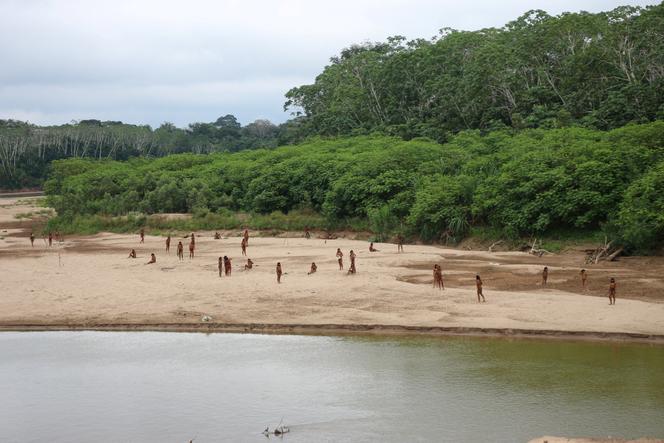


These rare images have been seen around the world. In mid-July, the NGO Survival International released photos and videos of one of the most isolated indigenous tribes on the planet: the Mashco Piro. Around 50 of them have been spotted on several occasions outside the Amazon rainforest, in which they live, in the department of Madre de Dios, southeast Peru. They emerged on the banks of a river, not far from a village belonging to another indigenous people, the Yine, who maintain regular contact with outside society.
Taken on June 26 and 27, what makes these images so special is the location of the Mashco Piro, as Teresa Mayo, mission officer in Peru for the NGO Survival International, said: "If they go out like that, there's something wrong."
This semi-nomadic people is thought to number 750 individuals, making it one of the largest uncontacted indigenous tribes in the world. According to Survival International, which works closely with the local indigenous association Fanamad, their abnormal presence outside the forest is linked to the activities of logging concessions, which are allegedly nibbling away at their territory to reach scarce resources such as mahogany.
In 2002, the Peruvian government created the Madre de Dios reserve to demarcate and protect Mashco Piro territory, in response to requests from local indigenous associations. But this reserve "did not correspond to their traditional territory, which was much larger," said Mayo. "Within a few days, logging concessions had bought up the plots not included in the reserve." This has led to so-called 'forced contacts,' since it is precisely this people's wish to avoid all contact with the outside world.
"It's a choice they've made, which is linked to their history," said Lila Akal of Survival International. At the end of the 19th and beginning of the 20th century, during the rubber fever, the rush to extract latex from certain plants in the Amazon rainforest, the Mascho Piro were enslaved, tortured, or died of diseases their immune systems had never been confronted with.
Their forced displacement is also linked to the destruction of biodiversity, the lack of food, and the direct violence they suffer, especially since Canales Tuahanamo, a logging company operating in the area since 2020, built a 200-kilometer road to make their territory accessible. Although the Mashco Piro refuse to enter into contact with the outside world, they do, on rare occasions, communicate with another neighboring indigenous people, the Yine, whose members recorded the images broadcast by Survival International. "They speak a language that's quite similar, so they're able to understand each other," said Mayo. "It's thanks to them that local associations, or ours, are able to obtain information."
You have 52.41% of this article left to read. The rest is for subscribers only.
